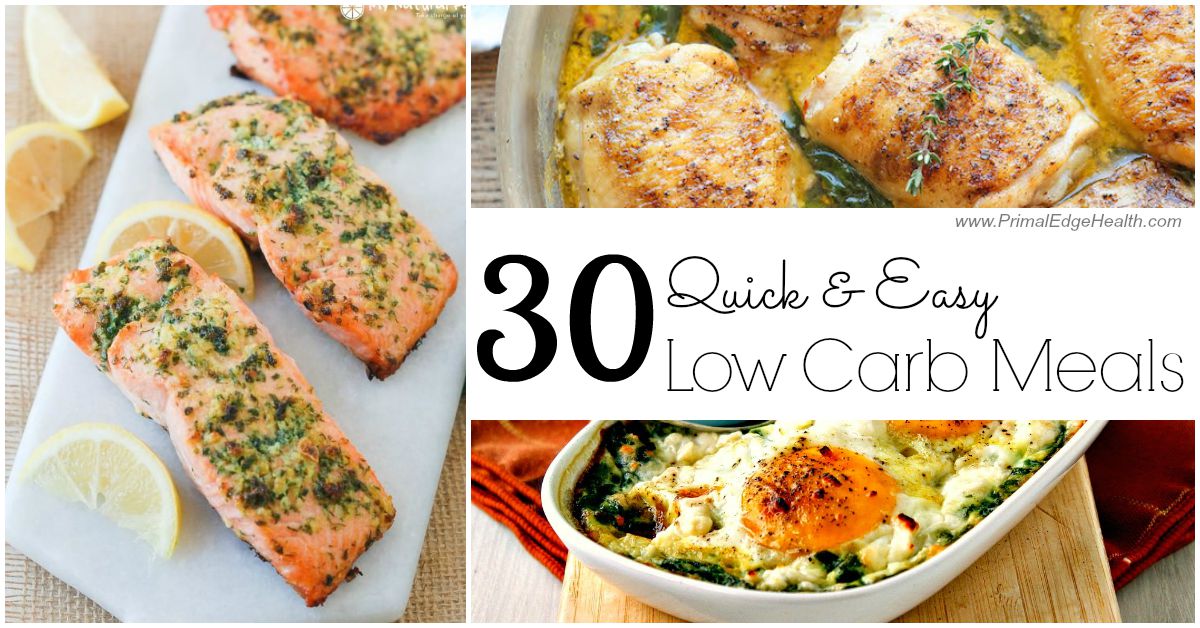Embark on a culinary journey with “The Ultimate Guide to Easy Low-Carb Recipes,” your passport to a world of delicious and manageable low-carb eating. This guide isn’t just about restrictive diets; it’s about unlocking flavorful possibilities, transforming everyday meals into satisfying, guilt-free experiences. From quick breakfasts that jumpstart your day to hearty main courses that nourish your body and decadent desserts that tantalize your taste buds, we’ll explore the diverse landscape of low-carb cuisine, simplifying the process and making healthy eating enjoyable.
We’ll demystify the various low-carb approaches, comparing popular diets like keto and Atkins to help you find the perfect fit. Discover a treasure trove of essential ingredients and pantry staples, learning how to use them creatively across breakfast, lunch, and dinner. Each recipe is presented with detailed, easy-to-follow instructions, accompanied by vibrant descriptions that bring the culinary experience to life. Whether you’re a seasoned low-carb enthusiast or a curious beginner, this guide provides the tools and inspiration to make low-carb living both simple and delicious.
Essential Low-Carb Ingredients and Pantry Staples
Building a well-stocked low-carb pantry is key to effortless and delicious meal preparation. Having these essential ingredients on hand will allow you to quickly whip up satisfying and healthy meals without sacrificing flavor. This section Artikels the core components for your low-carb culinary adventures, categorized for easy shopping and maximum versatility.
Healthy Fats
Healthy fats are crucial for satiety and overall well-being on a low-carb diet. They provide sustained energy and support hormone production. A well-stocked pantry should include a variety of options for diverse flavor profiles and cooking methods.
- Avocado Oil: Its high smoke point makes it ideal for high-heat cooking. Imagine the vibrant green hue glistening on perfectly seared scallops, or coating crisp roasted vegetables. Recipe Ideas: Avocado oil-roasted asparagus with lemon zest, a creamy avocado oil dressing for a vibrant salad, and pan-fried chicken breasts glistening with avocado oil.
- Olive Oil: A staple for its health benefits and delicate flavor, perfect for dressings, marinades, and sautéing. Picture a glistening drizzle of extra virgin olive oil over a hearty salad of mixed greens, or its rich flavor infusing a slow-cooked tomato sauce. Recipe Ideas: Classic Mediterranean salad with olives and feta, a simple sauté of garlic and spinach with a drizzle of olive oil, and a vibrant bruschetta topping.
- Coconut Oil: Adds a unique tropical flavor and is excellent for baking and sautéing. Envision the creamy texture of coconut oil in your low-carb muffins, or its subtle sweetness enhancing a stir-fry. Recipe Ideas: Coconut oil-based low-carb muffins, a flavorful coconut curry with cauliflower rice, and coconut oil-fried shrimp with chili flakes.
Low-Carb Vegetables
Low-carb vegetables form the backbone of many low-carb meals, providing essential vitamins, minerals, and fiber. Their versatility allows for a wide range of culinary applications, from simple side dishes to the stars of the show.
- Broccoli: A nutritional powerhouse, easily roasted, steamed, or added to stir-fries. Imagine the vibrant green florets, tender-crisp and bursting with flavor. Recipe Ideas: Roasted broccoli with garlic and parmesan, creamy broccoli cheese soup (using a low-carb cream base), and broccoli slaw with a creamy dressing.
- Spinach: Incredibly versatile, spinach can be added raw to salads, sautéed, or incorporated into omelets. Visualize the deep green leaves, wilting slightly in a pan with garlic and olive oil, or adding a vibrant pop of color to a hearty salad. Recipe Ideas: Spinach and feta omelet, sautéed spinach with garlic and a squeeze of lemon, and spinach and artichoke dip (using a low-carb cheese sauce).
- Cauliflower: A versatile vegetable that can be riced, mashed, or roasted, acting as a low-carb substitute for potatoes or rice. Picture fluffy cauliflower mash, seasoned with herbs and butter, or the delicate texture of cauliflower rice, perfectly complementing a flavorful stir-fry. Recipe Ideas: Cauliflower mash with herbs and butter, cauliflower rice stir-fry with chicken and vegetables, and roasted cauliflower with spices.
Protein Sources
Protein is essential for building and repairing tissues, keeping you feeling full and satisfied. A diverse selection of protein sources ensures a varied and exciting low-carb diet.
- Eggs: A nutritional powerhouse, eggs are incredibly versatile and can be prepared in countless ways. Envision sunny-side-up eggs with runny yolks, perfectly cooked omelets brimming with vegetables, or fluffy scrambled eggs with cheese. Recipe Ideas: Scrambled eggs with cheese and chives, a hearty omelet filled with mushrooms and spinach, and a classic eggs Benedict (using a low-carb hollandaise sauce).
- Chicken Breast: A lean protein source, perfect for grilling, baking, or sautéing. Picture juicy grilled chicken breast, seasoned with herbs and lemon, or tender baked chicken seasoned with paprika and garlic. Recipe Ideas: Grilled chicken salad, baked chicken with roasted vegetables, and chicken stir-fry with low-carb vegetables.
- Salmon: A rich source of omega-3 fatty acids, salmon is delicious baked, grilled, or pan-fried. Imagine flaky salmon fillets, pan-seared to perfection, with a crispy skin and moist interior. Recipe Ideas: Baked salmon with lemon and dill, grilled salmon with asparagus, and pan-seared salmon with a creamy dill sauce.
Breakfast Recipes

Kickstarting your day with a delicious and nutritious low-carb breakfast sets the tone for a successful day of healthy eating. These recipes are designed to be quick, easy, and adaptable to various dietary needs, ensuring you can enjoy a satisfying meal without sacrificing your low-carb lifestyle. They utilize readily available ingredients, minimizing prep time and maximizing flavor.
Quick and Easy Low-Carb Breakfast Recipes
These five recipes offer a variety of flavors and textures to keep your mornings interesting and satisfying. Each recipe is designed to be prepared in under 15 minutes, perfect for busy mornings.
- Egg & Cheese Cups: Imagine vibrant yellow eggs nestled in a bed of melted cheese, seasoned perfectly. To make these, whisk 2 eggs with a splash of milk and your favorite seasonings (salt, pepper, chives are excellent choices). Pour the mixture into greased muffin tins, sprinkle with shredded cheddar cheese, and bake at 350°F (175°C) for 12-15 minutes until set. These are easily adaptable; omit cheese for a dairy-free version, or substitute with dairy-free cheese alternatives. For nut-free, simply ensure your seasonings don’t contain any nut-based oils or extracts.
- Avocado & Egg Toast: Picture a perfectly ripe avocado, mashed and spread onto a slice of toasted low-carb bread (e.g., cloud bread or almond flour bread), topped with a fried or poached egg. The creamy avocado contrasts beautifully with the rich yolk of the egg. For this recipe, simply toast your bread, mash half an avocado, spread it on the toast, and top with your prepared egg. Dairy-free and nut-free adaptations are straightforward as the core ingredients are naturally free of both.
- Chia Seed Pudding: Visualize a creamy, dreamy pudding with a subtle sweetness and satisfying texture. Combine 1/4 cup chia seeds with 1 cup unsweetened almond milk (or other preferred milk alternative) and a touch of sweetener (e.g., stevia or erythritol). Stir well and refrigerate overnight. In the morning, enjoy it cold, possibly topped with berries for a touch of color and sweetness. For dairy-free, use a non-dairy milk; for nut-free, substitute sunflower seed milk or another suitable alternative.
- Keto Smoothie: Envision a vibrant, refreshing smoothie bursting with flavor and nutrients. Blend together 1 cup unsweetened almond milk (or other preferred milk), 1 scoop of your favorite low-carb protein powder, 1/4 avocado, a handful of spinach, and a few ice cubes. For extra flavor, add a squeeze of lemon juice or a dash of cinnamon. This is easily adaptable. Use dairy-free milk and protein powder for a dairy-free version; ensure your protein powder and any added ingredients are nut-free for nut-free adaptation.
- Bacon and Spinach Omelet: Imagine a fluffy omelet filled with crispy bacon and vibrant green spinach. Whisk 2-3 eggs with a splash of milk and seasonings. Sauté chopped bacon until crispy. Add spinach to the pan and cook until wilted. Pour the egg mixture into the pan and cook until set. Fold the omelet in half and serve. For a dairy-free version, use a dairy-free milk alternative. This recipe is naturally nut-free.
With “The Ultimate Guide to Easy Low-Carb Recipes,” you’re not just adopting a diet; you’re embracing a lifestyle change that celebrates flavor, convenience, and well-being. The recipes within these pages are carefully crafted to be both satisfying and achievable, proving that healthy eating doesn’t have to be complicated. Imagine vibrant breakfasts bursting with fresh ingredients, main courses that tantalize your taste buds with global flavors, and decadent desserts that indulge your sweet tooth without the guilt. This guide is your culinary compass, guiding you towards a healthier, happier you, one delicious, low-carb meal at a time.
Answers to Common Questions
What are the potential side effects of a low-carb diet, and how can I mitigate them?
Some individuals may experience temporary side effects like headaches, fatigue, or constipation (“keto flu”) during the initial adaptation phase. Staying well-hydrated, increasing electrolyte intake (sodium, potassium, magnesium), and gradually introducing low-carb foods can help minimize these effects.
Can I still enjoy alcohol on a low-carb diet?
Moderately consuming certain alcoholic beverages, like dry wine or spirits mixed with unsweetened mixers, is generally permissible on a low-carb diet. However, excessive alcohol consumption should be avoided as it can hinder weight loss and negatively impact health.
How often should I weigh myself while following a low-carb diet?
Weighing yourself too frequently can be discouraging. It’s recommended to weigh yourself once a week or even less often, focusing more on how you feel and the positive changes in your health rather than solely on the number on the scale.
Are there any specific medical conditions where a low-carb diet might not be suitable?
Individuals with certain medical conditions, such as kidney disease or pancreatic issues, should consult their doctor before starting a low-carb diet. A healthcare professional can assess individual needs and determine suitability.


